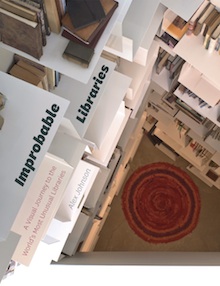By Lewis Fried
Electronic texts and contemporary public libraries have transformed settings for reading, communities of interests, and research. There is a conventional notion of a library that is often predictable in form, and somewhat tired in its spaces for reading. For readers of ”a certain generation,” that of the 1940s, the library was a brick building, with much electric lighting (sometimes harsh, sometimes dull, sometimes just right), often a bank of windows, spacious tables spaced at intervals end to end, in cavernous rooms, with shelves and shelves of books, many of them in the inaccessible “stacks” located in the basement. Conversation was shushed or whispered; places for discussion were often found in the hallways; a café was invariably unthinkable; and finding comfortable chairs was difficult (think of the 42nd Street New York Public Library of the 50s and 60s). These features did not lessen the pleasures of the library, but they did not enhance it. One simply assumed that this was how libraries should be.
This unusually formatted book (its major axis is a large horizontal one) is a collection of superb photographs and succinct commentary (if not meditation) doing justice to new libraries based on “principles that differ fundamentally” from those of the traditional library. There are chapters on “Libraries on the Move”; “Animal Libraries”; “Tiny Libraries”; “Big Libraries”; “Home Libraries”; “Mobile Libraries” and “Not Libraries” (libraries that are found, for instance, in supermarkets).
Improbable Libraries demonstrates that libraries can—and often do—exist anywhere that people gather. If people cannot come to the library, the library will come to them. Johnson presents photographs of libraries that are book-carts pushed by the dedicated; sleeves and baskets of books draped across the sides of donkeys, elephants and camels, plodding from village to village, sometimes across jungle and desert; books for borrowing found on boats and rafts; pop-up libraries in parks and city streets; hotels that have selectively stocked libraries; phone booths “repurposed” as a boxy library; bookmats that let you download and print a book, and libraries that not only encourage you take a book, keep it (or return it), but also suggest that you add a book of your own to the shelves. (I am reminded of youth hostel libraries.) The library is now a ubiquitous presence and an innovative form. Its venues are only limited by the imagination. In fact, there is no war between the library and the internet, but rather a happy adjustment of one to the other.
Among the inspiriting figure for “smaller libraries,” and by implication, pioneering ones, of many sorts, is Hernando Guanlao, of Manila. His personal library is a public one: the “Reading Club 2000,” which initially had one-hundred books displayed on the street by his home. The collection now surpasses thousands. No one need sign up for membership; books can be taken, kept, returned, or swapped.
As a result, Improbable Libraries presents the state of contemporary librarianship—the sheer accessibility, transmission, cultivation, and preservation of word, image, and sound. The culture of reading becomes thickened and ground-breaking. It’s true that many often prefer the solitude of a room or corner, but numerous readers, especially vivacious ones, know that the road to reading is paved with conversation and contemplation. The library at the University of Aberdeen with its asymmetrical loops of floors; the design for the Library of Birmingham which has an auditorium (three-hundred seats), a health center, and cafes; the Bibliotren, an “experimental electronic library project” in a train in Catalonia, and Tokyo’s Musashino library using bookshelves extending from floor to ceiling are architecturally striking and functional while nourishing the pleasures of all that reading implicates. Such modern library designs assert the significance and attraction of the library (and its functions) for our own day.
Improbable Libraries is a heart-warming and delightful book. Libraries now have not simply a presence, but many presences; that readers may be close to one form of it; that the library may reach beyond any fixed location. What’s not to rejoice?
Lewis Fried (ΦBK, Queen’s College, CUNY, 1964) is Professor of English Emeritus at Kent State University and a resident member of the Nu of Ohio chapter of Phi Beta Kappa.




